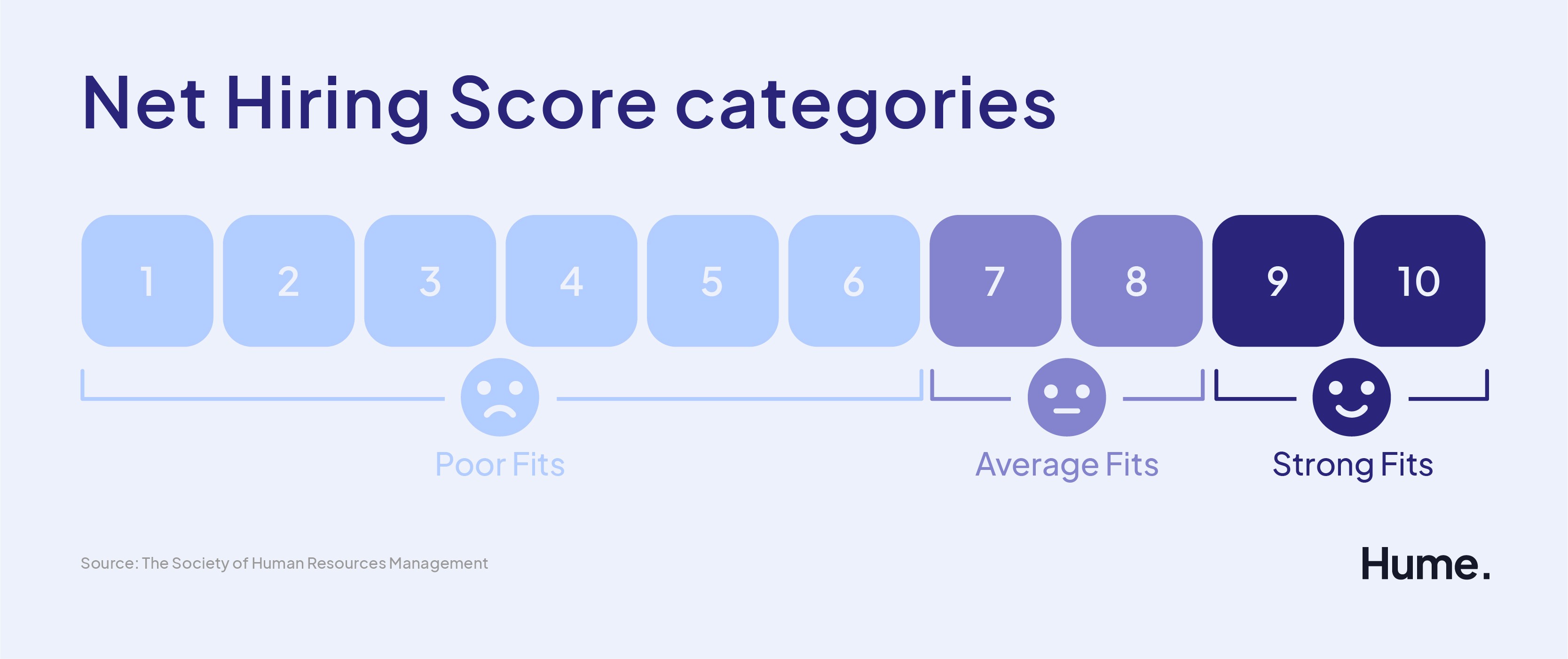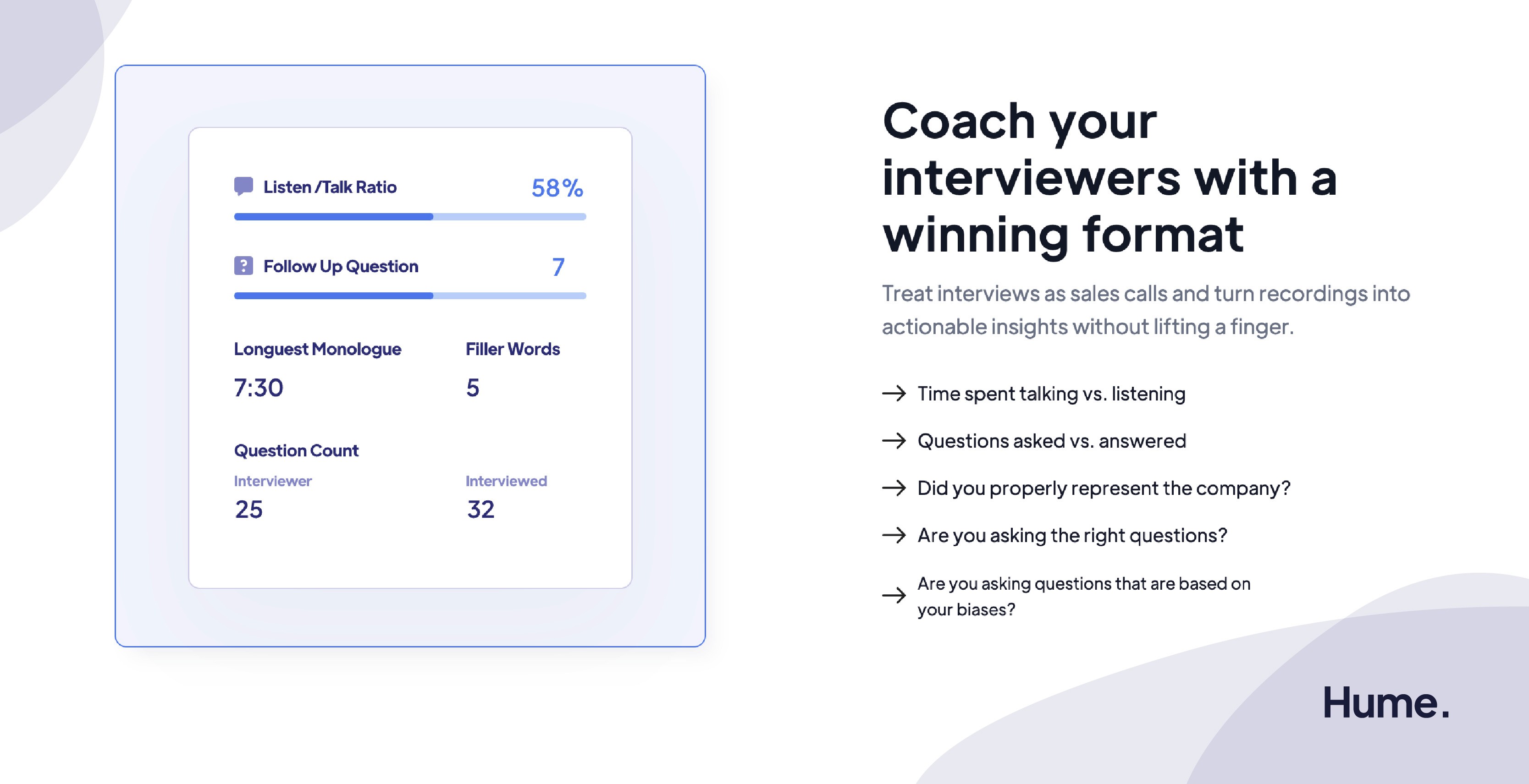Quality of Hire: How to Measure and Improve This Key Hiring Metric

2023
Hiring may be the final frontier when it comes to data and the workplace.
As much as businesses want to apply data to codify their talent acquisition processes, the number of data points and human elements that impact hiring is overwhelming to even think about — doubly so for hiring professionals who are racing to secure the best candidate in this competitive environment.
This is why many modern workplaces have adopted a single metric that accounts for several key data points: quality of hire.
If you’re dedicated to improving your hiring flow, it’s essential to develop a keen understanding of quality of hire. If you’re not deeply familiar yet, keep reading to learn everything you need to know about this pivotal hiring metric:
What the quality of hire metric means
How to quantify quality of hire
How to improve quality of hire — and in turn improve your hiring process, employee base, and business as a whole
What does quality of hire mean?
Quality of hire is a single metric that represents the level of value a hire brings to a business. It’s usually calculated for each new hire within 3 to 12 months of their starting date.
While quality of hire is foremost a metric for measuring employee performance, it also naturally provides insight into how effective your recruiting and hiring methods are at identifying ideal candidates.
Since different organizations have different definitions of quality, quality of hire can be calculated using a variety of data points, ranging from pre-hire metrics (new hire attrition, time to hire, etc.) to post-hire metrics (ramp-up time, performance, etc.).
Later we’ll show you a formula for using your preferred metrics to measure quality of hire. But first, let’s explore the specific reasons why it’s time your business prioritized quality of hire.

Leading reasons why modern organizations should measure quality of hire
Wonder why the cutting-edge owners, managers, and hiring teams are paying attention to quality of hire? For a couple of reasons, including retention, business quality improvement, money savings, and more.
Poor quality hires can cost you — a lot
The United States Department of Labor estimates that the typical low-quality hire costs the business 30% of the employee’s first-year pay. And a CareerBuilder survey found that almost 75% of companies report having made at least one low-quality hire.
Where does all this money get eaten up? It’s mostly spent on the resources that go into training and onboarding and the salaries of the personnel who have to replace a poor fit when they inevitably quit before adding value back into the business. On top of this, there’s the intangible cost of missed opportunities, clients lost in relation to poor hires, extra management time, rework, and diminished morale that slows the productivity of everyone on the team.
Quality of hire benchmarking can improve retention
Of course hiring top talent is important, but holding on to those hires can be a mystery when you don’t know what metrics to measure.
In the next section, we’ll show you a method that uses the average of several data points to arrive at quality of hire. If you choose to use this method, over time, you’ll end up with a data set that can be used to find the average quality of all hires across your organization. This number is a robust, quantitative benchmark against which all new hires from that point forward can be measured. If you do find a new team member isn’t quite hitting that benchmark when their quality of hire is calculated, you will be able to provide resources and programs to improve their performance and happiness — before they leave and you lose that big chunk of their first-year salary.
Uncover opportunities to upgrade hiring processes
By its nature, the quality of hire metric uncovers how your hiring practices are stacking up. If you have a specific performance threshold you expect new hires to meet and their quality of hire marks are consistently off base, it’s time to consider what hiring and recruitment processes can be optimized to weed out poor fits before they make it onto the team.
Quality of hire metrics can also be sliced and diced to make data-driven discoveries and decisions. For example, if workers with lower quality of hire scores were all sourced from the same platform, you know to focus your energies on improving your strategy around that platform.
Quality of hire = quality of business
Tracking quality of hire metrics over time can give you an idea of the health of your team, which is critical to the health of your entire organization. Striving to improve this one key metric — which we’ll give you tips on how to do — will have a powerful effect on the overall quality of your business.
2 methods to accurately measure quality of hire
There are two main strategies for calculating quality of hire: a straightforward formula and a more flexible option.
Simplified approach: calculate the Net Hiring Score
Net Hiring Score (NHS) is based on Net Promoter Score (NPS), a customer experience metric that uses one question — how likely are you to recommend our brand? — to identify whether customers are brand detractors or promoters.
Developed by SmartRecruiters, Net Hiring Score aims to quantify quality of hire by asking just two questions, about 90 days into a new hire’s tenure:
An employee performance question for the hiring manager: “On a scale of 0 to 10, is this person the right fit for the job?”
A job satisfaction question for the employee: “On a scale of 0 to 10, is this job the right fit for you?”
Find the average of these two numbers and you have an NHS that you can correlate to quality of hire. SmartRecruiters classifies people who score nine to ten as “strong fits,” seven to eight as “average fits,” and six or less as “poor fits.”

This equation simplifies and standardizes the technique of quantifying quality of hire. For this reason, we think it’s especially suited to large teams, teams with a lot of turnover, and talent acquisition pros that need to calculate quality of hire on a regular basis, whatever the reason.
Customizable approach: find the average of key quality indicators
If you prefer a more flexible approach that allows you to choose how many and which quality indicators you want to include in your quality of hire calculation, there’s also an equation for you.
With this equation, you’re basically finding the average of all the data points that go into your unique quality of hire metric.

To use it, first choose the quality indicators that define quality of hire for your organization. Some common quality indicators include pre-hire assessment scores, time to hire, job performance, retention, employee satisfaction, team/manager satisfaction, employee engagement, ramp-up time, etc.
Then you’ll quantify each of these indicators. Scoring out of 100 is the easiest approach, because then the results can be displayed as a percentage.
Now, let’s walk through how you’d put it all together in real life.
First, start with your equation: Quality of hire = [employee performance + employee satisfaction score + employee productivity] / 3
Next, gather some performance indicator scores:
Employee performance score (collected from manager): 90%
Employee satisfaction score (collected from employee questionnaire): 75%
Employee productivity (based on timesheets): 83%
With our scores plugged in, here’s what the equation looks like: Quality of hire = [90% + 75% + 83%] / 3
This makes our quality of hire score (with rounding) 83% for this individual employee. Pretty good!
Once you have a backlog of quality of hire metrics, you can average all of them to create a quality of hire benchmark against which to measure every new employee. This number can be used to guide future hires and also show how acquisition is performing over time.
You can also measure the quality of hire across your entire organization by using an equation that takes all quality of hire metrics and turnover into account: Company-wide quality of hire = [avg. quality of hire score + (100 – turnover rate)] / 2
This single number gives you a way to measure the quality of your entire team and whether or not your hiring strategy aligns with your business goals.
Since this is a highly-flexible equation, we find it’s an excellent fit for smaller teams, teams that really prioritize collecting and using lots of data, and hiring personnel that need to calculate quality of hire differently across different roles or periods of time.
5 tactics for improving quality of hire
There’s almost always room for improvement in business metrics. Here are five attainable tactics that your team can undertake to improve quality of hire scores over time.
1. Optimize the interview process for speed and accuracy using modern tech
Research from Glassdoor uncovered that lack of standardization in the interview process was a leading cause of bad hires and thus poor quality of hire.
In addition, a 2020 update of the Hiring For Attitude study exposed that over 80% of managers were able to spot the signs of a bad hire when looking back at interviews. In hindsight, they saw how interviews where the interviewee used negative language, vague answers, and disparaging remarks about former workplaces aligned with low quality of hire.
And it’s not only interview accuracy that can be improved. Speed is also everything.
Generally, top-tier talent is hired within ten days of starting the job search. Yet, the typical interview process takes 23 days! If you want better quality hires, you have to make sure your hiring workflow is moving just as quickly as the competition.
To capture more actionable insights from interviews and improve time to hire — all without sacrificing quality of hire — add Hume’s interview companion to your hiring process.
Hume is a modern talent intelligence platform that records, transcribes, and annotates interviews in real-time using artificial intelligence. When you have Hume riding along, your company can finally unlock all the valuable data that’s being created during interviews.
Using Hume, you won’t be distracted by note-taking or have to rely on inaccurate recall to make important hiring decisions. You can easily go back and review the most important parts of each interview and compare candidates question by question. When you start conducting all your interviews with Hume, you’ll have unprecedented insight into company-wide interview practices, which will help uncover if interviewers are following a consistent questioning structure, if there are any instances of unconscious bias, who on your team has the most impact as an interviewer, and most importantly which interview traits all your best hires share.
In addition to the interview content itself, Hume also provides metrics like time spent talking vs. listening, questions asked vs. questions answered, and more to enable you to view interview practices and check for consistency at a glance.
If you find your consistency or interviewing methods need a little work, or you want to fully operationalize the process that your best interviewer follows, just use Hume’s playlists to create an interview coaching platform! Build a playlist that includes instructions on how to sell the role and the company, how to interview for cultural fit, how to identify great and not-so-great interviewee answers, and any other best practices that you want to turn into a process.
This coaching aspect of Hume will enable you to shape anyone on your team into a stellar interviewer, rocketing you ahead of your competitors when it comes to closing top talent.
In addition to helping you hire smarter with data-driven insights, Hume also brings time savings to the table. Hume equips users with the tools to create highlight reels of interviews, which are easily sharable within the platform. This enables everyone involved in the hiring process to receive key candidate information and provide feedback at warp speed.
By smashing through outdated business silos and interview processes, Hume empowers your company to reduce time to hire at a speed many organizations can only dream of.

Hume injects speed and accuracy into the hiring process, empowering businesses to make data-based employment decisions. Get on Hume’s waiting list and get ready to upgrade your quality of interviewing and your quality of hire.
2. Involve potential colleagues to assess skills
Testing for cultural fit is important, as we’ll discuss next, but so is making sure candidates have the fundamental skills needed to complete their job and contribute to the team. A lot of interviews aren’t able to accurately test for certain skills because talent acquisition folks are typically not the same folks who are doing the workday in and day out.
To really make sure a new hire is going to bring quality and value to the team, you must involve the people with whom they’ll potentially work.
Now, this doesn’t necessarily mean having potential colleagues sit in on every interview. This is likely not the best use of everyone’s time. Instead, use an interview collaboration tool, such as Hume, to make sure the right parts of candidate interviews are shared with the right people. This will allow key players to assess whether or not a candidate has relevant skills for the role well before the hire actually happens.
3. Consider cultural fit
Now let’s talk about the cultural fit that we just mentioned. Making sure a potential hire is going to fit in at your organization is critical because almost no one works in a vacuum.
When a new hire is aligned with your company practices and mission, they’re able to get up to speed faster, work productively within your team, and enjoy a satisfying experience. Ramp-up time, productivity, and employee satisfaction are typically pivotal data points that influence quality of hire.
To prioritize cultural fit during the hiring process, implement interview questions that get their feelings on some of the most crucial elements of your company culture.
4. Get real about the role
It’s a common pitfall to only talk about the highlights of a role when wooing a job candidate. While this might help attract an ideal candidate, it can cause dissatisfaction when other elements of the job, such as the challenges, finally come to light. This misalignment is what causes poor retention and damages company-wide quality of hire.
Improve retention and quality of hire by committing to full transparency early in the hiring workflow. There are different ways to make sure candidates get a realistic idea of the job. A simple approach is to have a potential colleague or manager sit in on an early interview to talk about the typical workday and the skills needed for the role. More advanced approaches include crafting situational judgment tests or using software to create interactive online simulations.
5. Never stop collecting data and iterating
As the saying goes, what you water is what will grow. If you want to improve the quality of your business, you must focus on improving the quality of each of your hires. How do you know if you’re doing that? You keep collecting data, you keep implementing it in your quality of hire calculations, and you keep tracking that metric to make sure it’s trending upward.
Sometimes, your quality of hire metric won’t move in the right direction — and that’s OK. That's your sign to keep iterating on your hiring process until you’re back on track.
Enhance interviews, enhance your quality of hire with Hume
When fast and accurate interviews make up the foundation of high-quality hires, it’s time to adopt tech that empowers your talent acquisition team to conduct flawless interviews every time.
Follow Hume’s LinkedIn page and visit our website to sign up for early access to see how Hume’s interview companion will boost the quality of your hiring process.



